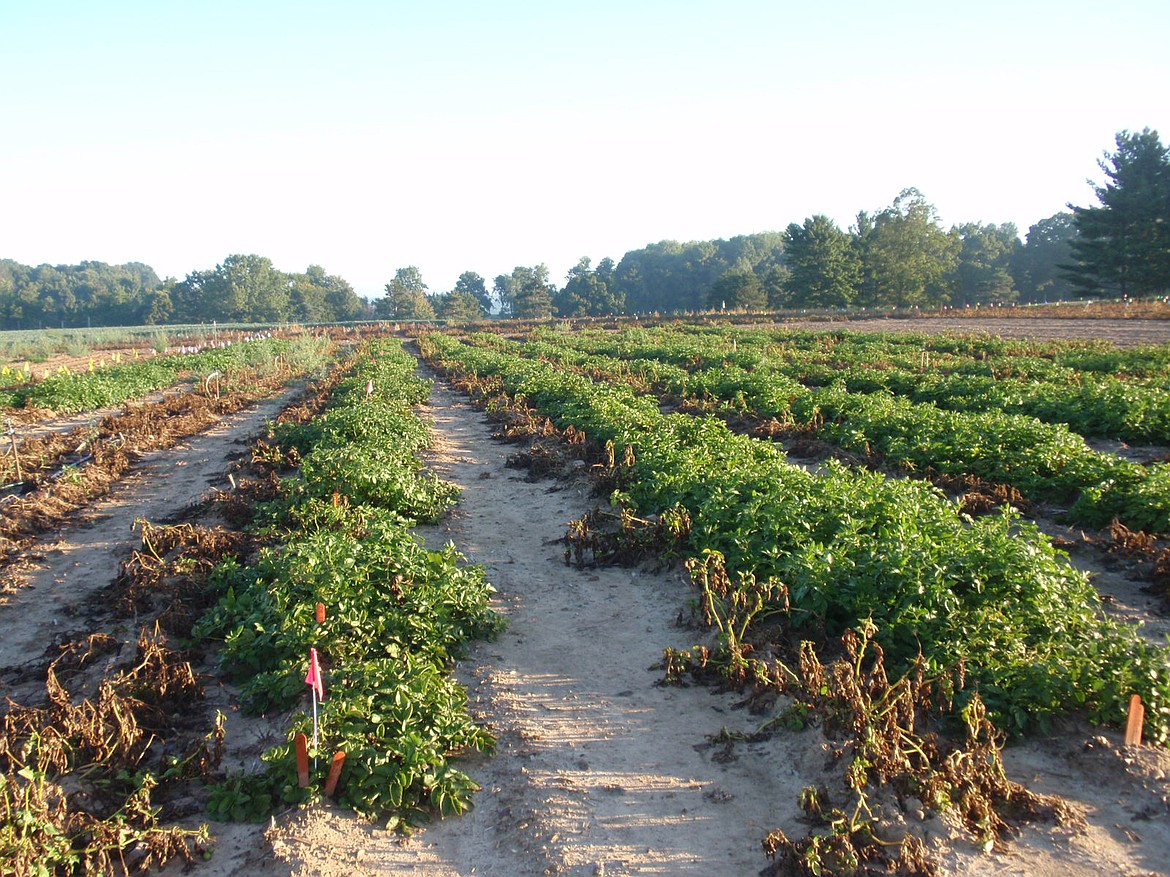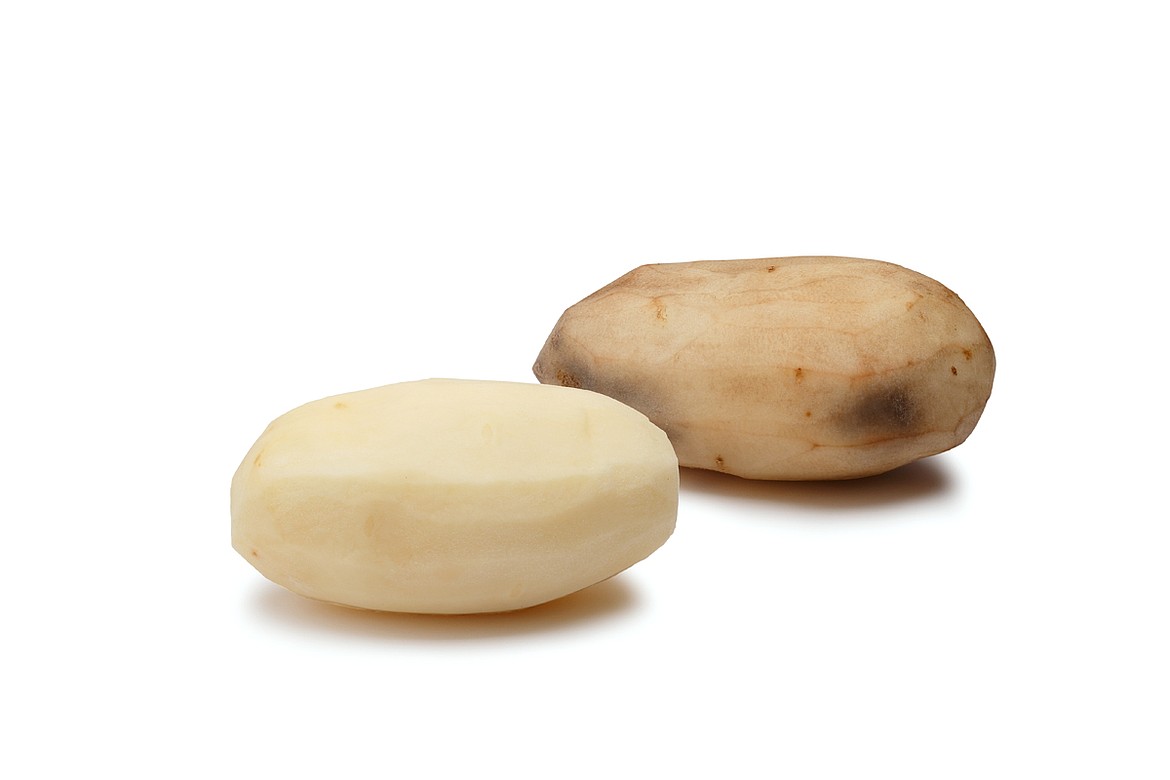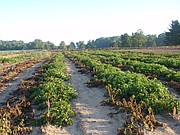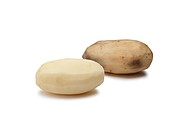The science of spuds: Bioengineering makes strides toward better potatoes
BOISE — Turns out, that potato you bake or fry or boil and then mash? It’s way more genetically sophisticated than you are.
“Potatoes are tetraploid. Four sets of chromosomes, and in that sense, they are more complex than humans since we have two sets of chromosomes,” said Doug Cole, director of marketing and communications for Simplot Plant Sciences.
Take that, simple human.
Of course, Cole said this unique trait of potatoes — four sets of chromosomes — only applies to commercial varieties. Potatoes in the wild, in their native habitat in the Andean mountains and the Chilean coast, only have two sets of chromosomes.
This makes trying to breed new varieties from both long-established commercial strains and wild types a hit-and-miss proposition, with a lot more miss than hit, according to Cole.
“It takes about 15 years to create a new variety of potato through conventional breeding, self-pollination and all that. So there are efforts at major universities all around the country, including Washington State University and the University of Idaho, to breed new traits,” he said.
Cole compared this long and complicated process to throwing 100 six-sided dice and having them all come up one.
“It is very exciting because you just never know what you’re going to get,” he said. “You have to replant and replant and replant. And, of course, it takes a while, six months or so, for a potato to grow.”
Once you find traits you like, or the traits you’re looking for, you then have to do it all over again, Cole explained.
It’s why Cole said companies like J. R. Simplot have turned to bioengineering — otherwise known as genetic modification — to make desired traits manifest themselves much more quickly in potatoes.
Most bioengineering involves inserting genes and gene sequences that manifest proteins not found in the original crop and are often drawn from very different kinds of organisms. For example, some types of the common soil bacterium Bacillus thuringiensis — Bt — produces a protein that repels or kills insects, and versions of the protein have been used as a pesticide for years.
However, researchers inserted the genes for that protein into crops like corn, giving the plant the ability to produce its own natural pesticide to fend off pests like the caterpillars of the European corn borer moth. In addition, genes from another type of bacteria were found to convey resistance to the broad-spectrum glyphosate herbicides, and so corn, cotton and soybeans were bio-engineered for resistance to the use of glyphosate herbicides such as Roundup.
Cole said the pervasiveness of bioengineered crops — possibly as much as 80% of processed foods in a supermarket contain bio-engineered crops — is largely due to the fact that most of those modified crops are commodities used as ingredients, and not eaten fresh or unprocessed like potatoes.
Which has meant both farmers and consumers have been much more reticent to embrace bioengineered potatoes than they have corn or soybeans.
“You know, there’s been some work on potato protein, but generally, potatoes are consumed either in the fresh market or the processed market. They’re not necessarily used as widely as an ingredient,” Cole said.
Still, Cole said Simplot has done work on bioengineered potatoes and has developed a couple of varieties intended to strengthen disease resistance and improve storage and handling characteristics. Developers have also made them safer to eat by reducing the kinds of chemicals produced when potatoes cook at high temperatures for too long.
Cole specifically referred to the company’s White Russet brand of potato, which has been genetically modified for traits that make it less susceptible to bruising and turning brown and therefore easier to store.
“If you peel a potato and leave it exposed to the air, within 20 minutes it’ll start turning brown,” he said. “You’ll see pressure bruises from handling and storage, and you’ll see black spots quite frequently, especially in late season.”
Cole said potatoes without those black spots are eaten rather than thrown away, and that helps keep down some of the estimated 3 billion pounds of potatoes thrown out every year.
The White Russet’s’ reach is limited, Cole said, because it’s not sold in major supermarkets and is limited primarily to regional supermarkets.
Cole said Simplot has also developed a potato that produces far fewer of the amino acids that can be turned into acrylamide when potatoes are fried. Discovered in 2002, acrylamide was found to be a likely cause of cancer and is regulated by the state of California, Cole said.
“Since we lowered the level of asparagine (the amino acid used to make acrylamide), we have upwards of 70% less acrylamide when cooked or fried,” he said. “I think one of the reasons we were readily approved by the USDA and FDA at the time was that we have a health and safety benefit.”
Cole said bioengineered potato cultivation in Washington right now is limited to university trials and some test plots, and that Simplot doesn’t sell any of the engineered potatoes it grows in Washington.
“Primarily, we sell two varieties of potatoes that don’t grow well in Washington,” he said. “Should we change that moving forward, Washington is a hugely important growing area and it’s important to Simplot because we have plants in Pasco.”
That expansion is still tentative.
“I think it would be a place we would look at but it’s not in our current plans,” he added.
Chris Voigt, executive director of the Washington State Potato Commission, described the new technology as amazing, but not one that is widely used in Washington – yet.
“We don’t currently grow any commercial GM potatoes in Washington State, but we look forward to the day when our potato processors and other domestic and foreign customers ask us for these new varieties,” Voigt said via email.
“We now have the ability to use existing potato genes found in nature to quickly create better potatoes that are naturally resistant to all sorts of pests and diseases,” Voigt added. “These new technologies will be critical in helping us grow more food using fewer of the earth’s resources.”
Cole said much of what Simplot is doing with bioengineering potatoes is simply speeding up the very complex and time-consuming breeding process that results in new varieties by inserting genes from other varieties of potatoes. For example, genes from a wild potato were found to improve resistance to the late blight fungus, and the genetically modified result of that work requires a farmer to spray 50% less fungicide. It’s not a problem Columbia Basin potato farmers face, he noted, but it’s a big deal to potato growers in the Midwest.
“It gives a sort of natural resistance and you can sleep at night if you’re a grower not having to worry about late blight decimating your crop,” he said.
If there’s a goal, Cole said, it is to be able to eventually grow potatoes that possess all the desired characteristics from true seeds, rather than from the pieces of seed potatoes. Because right now, that’s the only way to guarantee the bred-for characteristics will persist.
However, Cole explained that means getting potatoes with a simpler arrangement of genes — wild diploid potatoes with two sets of chromosomes being bred or bioengineered with commercial species of diploid potatoes.
“Nobody plants the seeds from the (potato) berries. If you did that with commercial varieties, you’d have a bunch of different shapes and colors and quality potatoes underground,” he said.
If farmers could plant true seeds from pollinated potato flowers that become potato berries, Cole said that would change the industry significantly. If nothing else, actual potato seeds would be a whole lot easier to store for long periods of time and would not require huge, costly climate-controlled sheds currently needed for seed potatoes.
“What can diploid potatoes do for you?” Cole asked. “They don’t have the same disease pressure, you can transport them easily, they’re stored at ambient temperatures. Imagine the benefits.”
Cole said this is something Simplot and a number of other companies are working hard on right now in the hope of, at some point, having potatoes that can be grown from true potato seed.
“With any luck, in the next 10 years, we will have wild and cultivated potatoes bred together with amazing benefits,” he said.
Charles H. Featherstone can be reached at cfeatherstone@columbiabasinherald.com.






